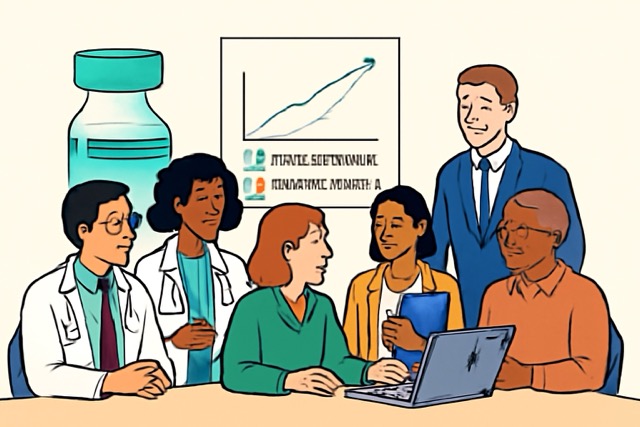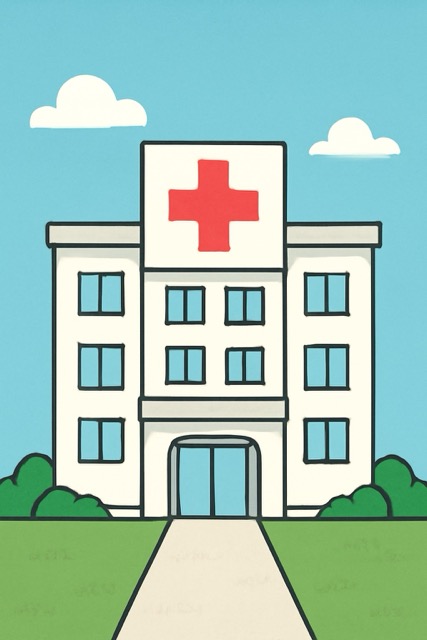1. Pharma’s Money Maze: Where Drug Dollars Disappear in the US vs. Europe
Ever look at a drug’s price and wonder where the money actually goes? A pill travels from the factory to your pharmacy, and along the way, a whole ecosystem of middlemen takes a cut. But the size of those cuts—and who gets them—is wildly different in the US versus Europe. Let’s follow the money.
The US pharmaceutical system, with its complex web of powerful intermediaries like Pharmacy Benefit Managers (PBMs), creates far more hidden and lucrative margin pools than the more direct, regulated wholesaler-to-pharmacy model common in Europe.
The European Autobahn: Direct and (Relatively) Transparent
Think of the European drug distribution system as the German Autobahn. It’s fast, efficient, and has clear rules of the road. For the most part, the journey is simple:
- Manufacturer (e.g., Novartis, Sanofi) sells the drug.
- Wholesaler buys it, stores it, and delivers it to pharmacies.
- Pharmacy dispenses it to you.
The key here is that the margin pools—the places where profit accumulates—are generally visible and regulated. A major pan-European wholesaler like the Phoenix Group (a privately held German company that is one of Europe’s largest pharmaceutical traders) buys drugs in bulk. Their profit comes from a negotiated, and often government-capped, percentage markup. It’s a high-volume, low-margin business. The same goes for the local Apotheke or pharmacy. They earn a predictable dispensing fee plus a small, often regulated, margin on the drug’s cost.
There isn’t a powerful middleman negotiating secret rebates. The price the wholesaler pays is close to the price the manufacturer receives. This transparency and regulation mean fewer opportunities for massive, opaque profit pools to form between the factory and the pharmacy counter. The road is straight, and there are very few toll booths.
The American Freeway: More Lanes, More Tolls, More Traffic
Now, let’s cross the Atlantic. The US system isn’t an Autobahn; it’s the Los Angeles freeway system at rush hour. It’s bigger, more complex, and packed with toll booths, off-ramps, and hidden lanes. The same players exist—manufacturer, wholesaler, pharmacy—but they’re joined by a uniquely American cast of powerful intermediaries.
1. The PBM: The Power Broker The most important player to understand is the Pharmacy Benefit Manager (PBM). Think of them as the bouncers of the drug world, deciding which drugs get into the club (an insurance plan’s approved list, or “formulary”). The three biggest—CVS Caremark (owned by CVS Health), Express Scripts (owned by Cigna), and OptumRx (owned by UnitedHealth Group)—control about 80% of the market.
Their power comes from negotiating massive, secret rebates from drug manufacturers. A drugmaker with a new, expensive cholesterol drug wants access to the 100 million people Cigna’s PBM covers. To get prime placement on the formulary, the drugmaker agrees to give the PBM a rebate—say, 40% off the list price.
This creates the “gross-to-net bubble”: the huge gap between a drug’s official list price (the Wholesale Acquisition Cost, or WAC) and the actual net price the manufacturer receives after all rebates. That bubble is where billions in margin live. The PBM keeps a portion of that rebate and passes the rest to the insurer (its client). Your co-pay, however, is often calculated based on the pre-rebate list price.
2. Specialty Pharmacies: The High-End Handlers For complex, expensive drugs for conditions like cancer or multiple sclerosis, there’s another layer: the specialty pharmacy. These are often owned by the same companies that own the PBMs (e.g., CVS Specialty). They have their own margin structure for handling, distributing, and managing patients on these high-touch medicines. It’s another toll on the freeway.
3. “Buy-and-Bill”: When Your Doctor Is the Pharmacy For drugs administered in a clinic, like chemotherapy infusions, we enter the world of “buy-and-bill.” Here, the physician’s office or hospital buys the drug from a wholesaler (like McKesson). They then bill the insurer for the drug and its administration. Crucially, they bill at a rate higher than their purchase price, creating a direct profit margin for the provider. This system can create an incentive to use a more expensive drug if it offers a higher reimbursement spread.
A Tale of Two Pills: Let’s Do the Math
Let’s trace a hypothetical blockbuster drug, “InnovateX,” with a list price of $1,000 for a month’s supply.
The European Journey:
- Manufacturer’s Price: Sells to wholesaler for $950.
- Wholesaler Margin: Sells to pharmacy for $980, taking a $30 margin (a ~3% markup).
- Pharmacy Margin: Sells to the health system/patient for $1,000, taking a $20 margin plus a small, fixed dispensing fee.
- Total Intermediary Margin: ~$50. The manufacturer’s net price is close to the final price.
The American Journey:
- Manufacturer’s List Price (WAC): $1,000.
- PBM Rebate: The PBM negotiates a 40% rebate ($400) to put InnovateX on its preferred formulary.
- Manufacturer’s Net Price: The manufacturer actually receives only $600.
- PBM Margin: The PBM passes $300 of the rebate to the insurer but keeps $100 for itself. This is a core profit pool.
- Wholesaler Margin: The wholesaler, like McKesson, still moves the box. It buys from the manufacturer at ~$980 (based on list price) and sells to the pharmacy for ~$990, making a small $10 logistics fee.
- Pharmacy Reimbursement: The pharmacy dispenses the drug and is reimbursed by the PBM at a rate of, say, $970, plus a small dispensing fee. The pharmacy’s margin is tight or sometimes negative on the drug itself.
- Total Intermediary Margin: The PBM’s $100 rebate share is the big one. Add in the wholesaler fee and other administrative costs, and the “middle” captures a much larger slice of the pie. The “gross-to-net bubble” here is $400, or 40% of the drug’s list price.
The final price to the health system is lower than the list price, but the complexity allows the PBM to capture a significant margin that simply doesn’t exist in the European model.
What to Watch
For investors trying to monitor these dynamics, here are a few key metrics:
- The Gross-to-Net Bubble: Publicly-traded drug manufacturers (like Pfizer or Merck) disclose the gap between their gross sales and net sales. A widening gap means more money is flowing to rebates and intermediaries, primarily PBMs.
- PBM Spreads & Legislative Risk: Keep an eye on any state or federal legislation aimed at PBM transparency. Bills requiring PBMs to disclose their retained rebates or pass them all through to clients could fundamentally threaten their business model.
- Biosimilar Adoption Rates: When a cheaper biosimilar (a generic version of a complex biologic drug) launches, watch how quickly it gains market share. Slow adoption can be a sign that PBMs are favoring the original, higher-priced drug because its manufacturer is offering massive rebates to block the competitor.
- Vertical Integration Impact: Watch the earnings reports of integrated giants like CVS Health and UnitedHealth Group. How much of their profit is coming from their OptumRx or Caremark PBM segments versus their insurance or provider arms? This shows where the value is being captured.
This is a simplified map of a very complex territory. What other parts of the pharma money maze are you trying to figure out?
Views are my own. Educational market commentary & research notes. Not investment advice; no client relationship. I may hold positions I discuss.


